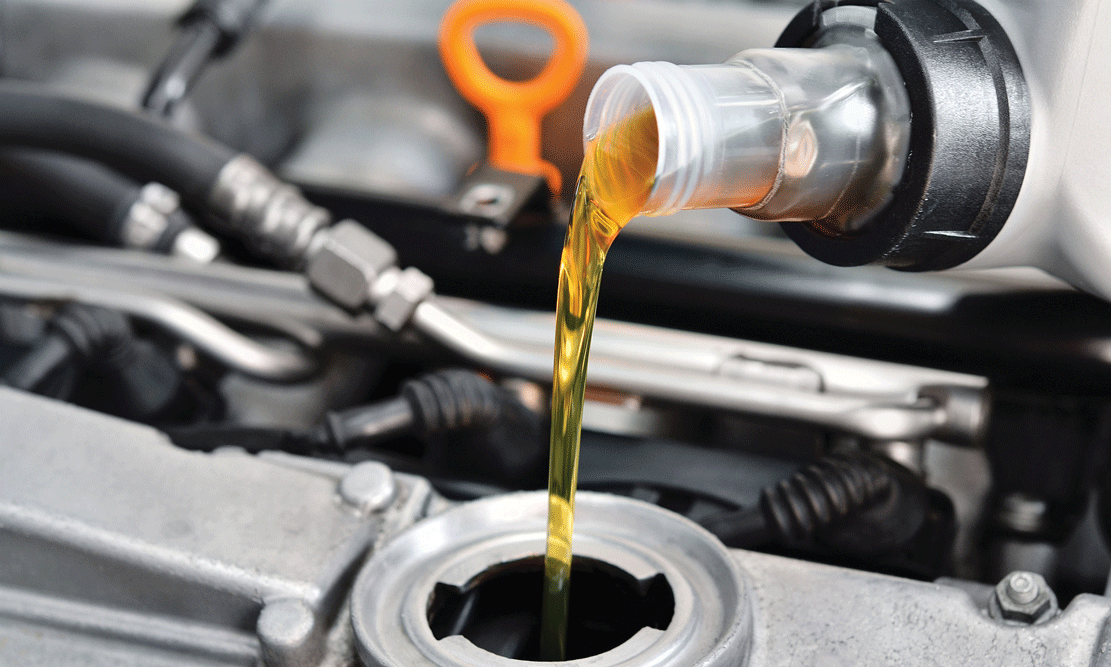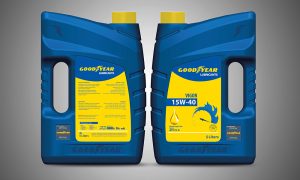How lubricants keep your fleet moving
Lubricants have to be specifically developed for the tough operating conditions of the Middle East

Last November, Truck & Fleet ME covered an impressive feat achieved by Al-Futtaim Auto and Machinery Company (FAMCO), Volvo Trucks’ UAE distributor, in conjunction with Emirates Transport. Sixty-five Volvo FH 440s supplied by FAMCO to Emirates Transport for use by the Abu Dhabi Gas Industries Limited (GASCO) managed to each rack up over a million kilometres on their odometers, without reporting a single breakdown or major component failure.
This is testament to the importance of carrying out proper maintenance and servicing at regular intervals, along with using genuine parts on your vehicles. And if other fleet operators want to emulate their fleet, then ensuring they’ve got the right lube is an essential step.
Using good-quality lubricants is the aspect of maintaining vehicles well which is perhaps the most easily overlooked, says Mike Fritz, divisional manager of the truck and bus division at FAMCO.
“Oil is probably one of the most crucial parts when it comes to maintaining a vehicle. If you don’t have a good lubricant in your vehicle, everything else you do is wasted. Your engine just won’t last, your gearbox won’t last, and your axle won’t last.”
For most fleet owners, unfortunately, there seems to be a widespread mentality that oil is oil, and the advantages of using quality lubricants are dismissed in favour of options easier on the wallet, Fritz said at a recent seminar on Volvo’s lubricants held by FAMCO. Unlike the case of the GASCO trucks, in several instances fleets have had engines break down even after 500,000km on account of not using genuine parts and lubricants, he points out.
Nevertheless, OEMs, dealers and lubricant manufacturers are heavily investing in developing tailor-made oils to keep vehicles and machines in top condition. Volvo, for one, has a partnership in place with ExxonMobil to develop oils specifically for Volvo vehicles and equipment.
“On a global level, we work with Volvo head offices when they develop their machines, engines and parts,” explains Ahmed Farwiz, strategic global accounts manager for the Africa Middle East Cluster at ExxonMobil Egypt.
ExxonMobil then develops oils for Volvo according to the manufacturer’s requirements, making the product “a genuine spare part” for Volvo, he adds. “It’s not just an off-the-shelf oil that can be used.”
The most important advantage of using these Volvo-branded oils is ensuring the longevity of the vehicles on the road, Fritz says, referring to the Emirates Transport example.
Other oil companies are also investing in research and development to create high-quality products. French giant Total has four research centres worldwide – two in France, one in Belgium and one in India – where more than 500 scientists work on developing new products to meet the manufacturer requirements, says David Khalife, managing director of Total Marketing Middle East.
In the Middle East, where tough operating conditions are the norm, lubricants have to be developed specifically to adapt to market needs in the region. The high temperatures and dust which are characteristic of the territory hugely affect the kind of products that can be used, Khalife notes.
Additionally, while some countries are stepping up standards for fuel quality in an effort to curb pollution, diesel with high sulphur levels – which is commonly found in the region – can also adversely affect lubricants.
“Unfortunately, high sulphur content does break down the oil. So Volvo has developed a service schedule for various markets, and depending on the sulphur content of the diesel, they would shorten or lengthen the oil change intervals,” Fritz says, adding that the high loads frequently carried in the UAE and other parts of the region make it all the more crucial to invest in genuine parts and oils to prolong the life of vehicles.
A tough sell
Despite the benefits of paying attention to lubricants, manufacturers often find it challenging to get customers to make the switch to genuine products, as not everybody is interested in the oil that goes into their vehicles. “In this segment, customers largely depend upon advice rendered by OEMs or mechanics,” Khalife says.
In order to cope with this and ensure customers get their hands on the right products, Total has developed a network of oil change centres where customers can find the most appropriate lubricants for their vehicles. It has also created OEM recommendation charts based on Middle East specifications that highlight Total-recommended products for various types and makes of vehicles.
In addition, the company invests in training OEM personnel and their mechanics regarding new trends in lubricants to service customers better, Khalife says.
Fritz also emphasises the benefits of training personnel to increase customer awareness. “When our team goes out to see our customers, they don’t just sell the product. They can actually look at the performance of the vehicle, what the vehicle’s requirements are, and make sure that the correct products are provided.”
Events like the Volvo lubricants seminar further help get the message across, he adds.
Even with these efforts, it is still challenging to convince customers to invest in genuine oils, primarily due to the price factor. Fleet owners have a wide range of alternative, non-genuine parts and oils that they can buy at far cheaper prices, he admits.
The benefits of using better lubricants manifest over the long term in reduction of wear and tear on engine components, leading to lower repair and maintenance costs and ultimately decreasing total cost of ownership. After all, as Fritz points out, the purchase price of a vehicle is only about 15% of the TCO, with the remainder spent on servicing and maintenance.
Investing in good products, therefore, may be more expensive initially, but pays for itself in the long run, decreasing operating costs and downtime. Moreover, fleet owners can also benefit in terms of fuel savings by purchasing the right lubricants, further strengthening the TCO advantage, Khalife notes. Total claims its Rubia and Transtec lubricants, used in combination, can achieve fuel economy of 3% on average, or approximately 1L per 100km.
If customers do make the decision to go with branded oils, how can they ensure they get value for money? Khalife points out that apart from choosing the right product, respecting service and oil change intervals is crucial.
“The purpose of lubrication is to protect the engine from wear and tear, clean the engine components, and reduce heat and so on. Not changing the lubricants at the specified intervals may lead to various mechanical problems and eventual breakdown of the equipment.”
Making the right choice
There are several considerations that are important to bear in mind when choosing the right oil for your vehicles. Apart from fairly obvious factors like brand image, quality and whether the product is OEM-approved, it’s also important to be very familiar with the operating conditions your vehicles are subjected to. Conditions like high idling, high loads, dust and heat all affect the type of lubricant that should be used, Khalife says. It is also essential to read the HSE guidelines for the products, which are generally available in the Material Safety Data Sheets of the lubricants.
Another factor to pay attention to is viscosity, Khalife and Farwiz both agree. Viscosity, a fluid’s resistance or thickness to flow, is generally specified by manufacturers and is an important criterion when choosing oils. Farwiz strongly cautions against adding substances to lubricants to improve viscosity. “You buy the finished product with the right viscosity at the time of the purchase, but never add anything additional to what the manufacturer has done. This creates much more trouble.”
Lubricants should also be able to function at a wide range of temperatures, not just when it’s hot, Frtiz notes. “Ninety percent of wear and tear takes place from cold start to operating temperature. Therefore, if you’re using a lubricant that is not designed to be able to work even at cold temperatures, you have all this major wear and tear taking place.”
If this wear and tear leads to engine failure and other components needing repair, fleet owners face more than just the longevity of their vehicles being compromised. Vehicle downtime, after all, can translate into very real costs in terms of lost revenue on a daily or hourly basis, which doesn’t bode well for businesses.
“It’s one thing losing an engine or losing a gearbox due to bad maintenance or using incorrect products,” Fritz concludes. “[But] what’s probably one of the biggest things which we don’t normally calculate is customer satisfaction, or the lack thereof. When you start dropping loads, you’re not delivering as you’ve promised, and the customer suffers. That’s probably one of the biggest costs, a disappointed customer.”

























